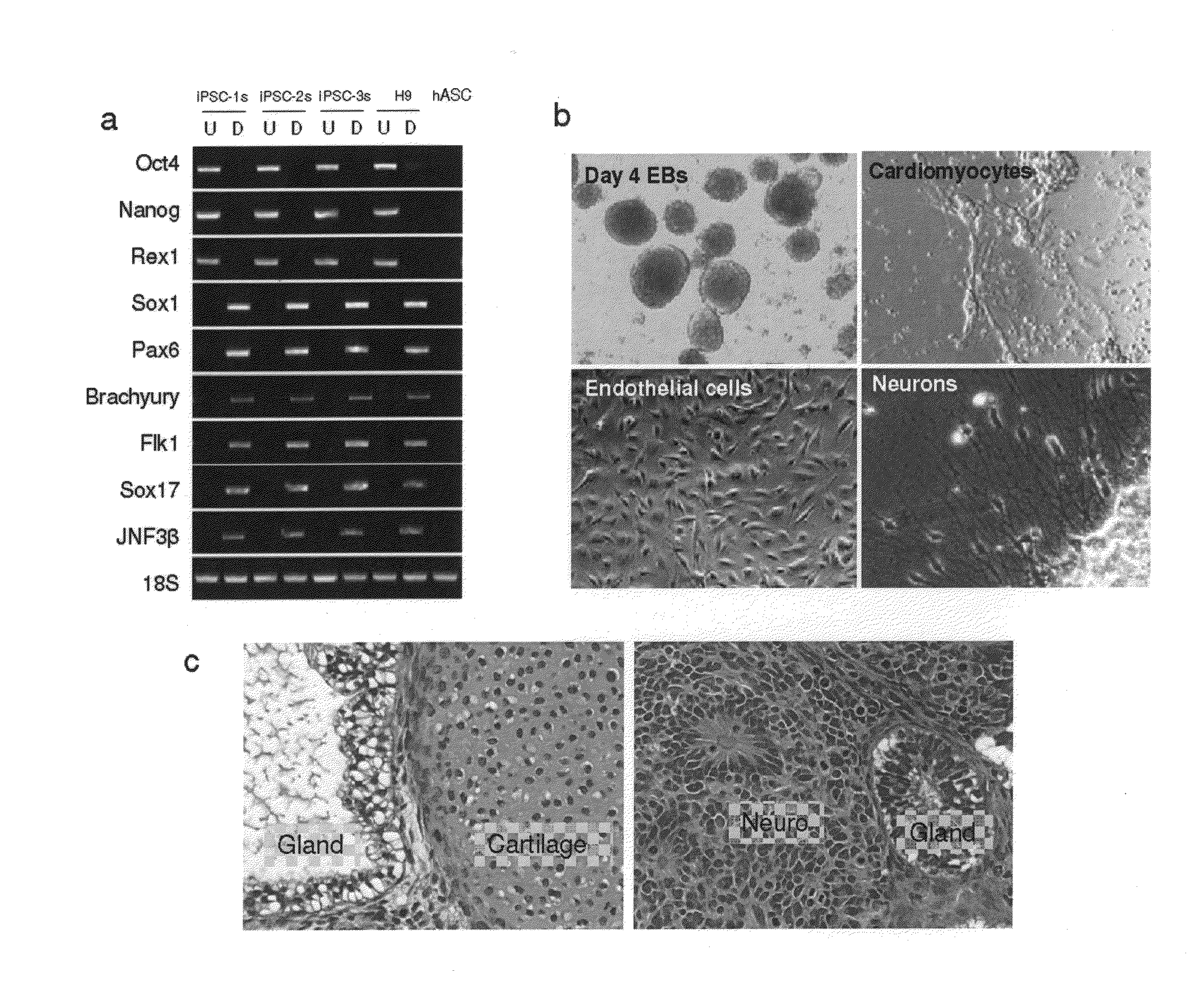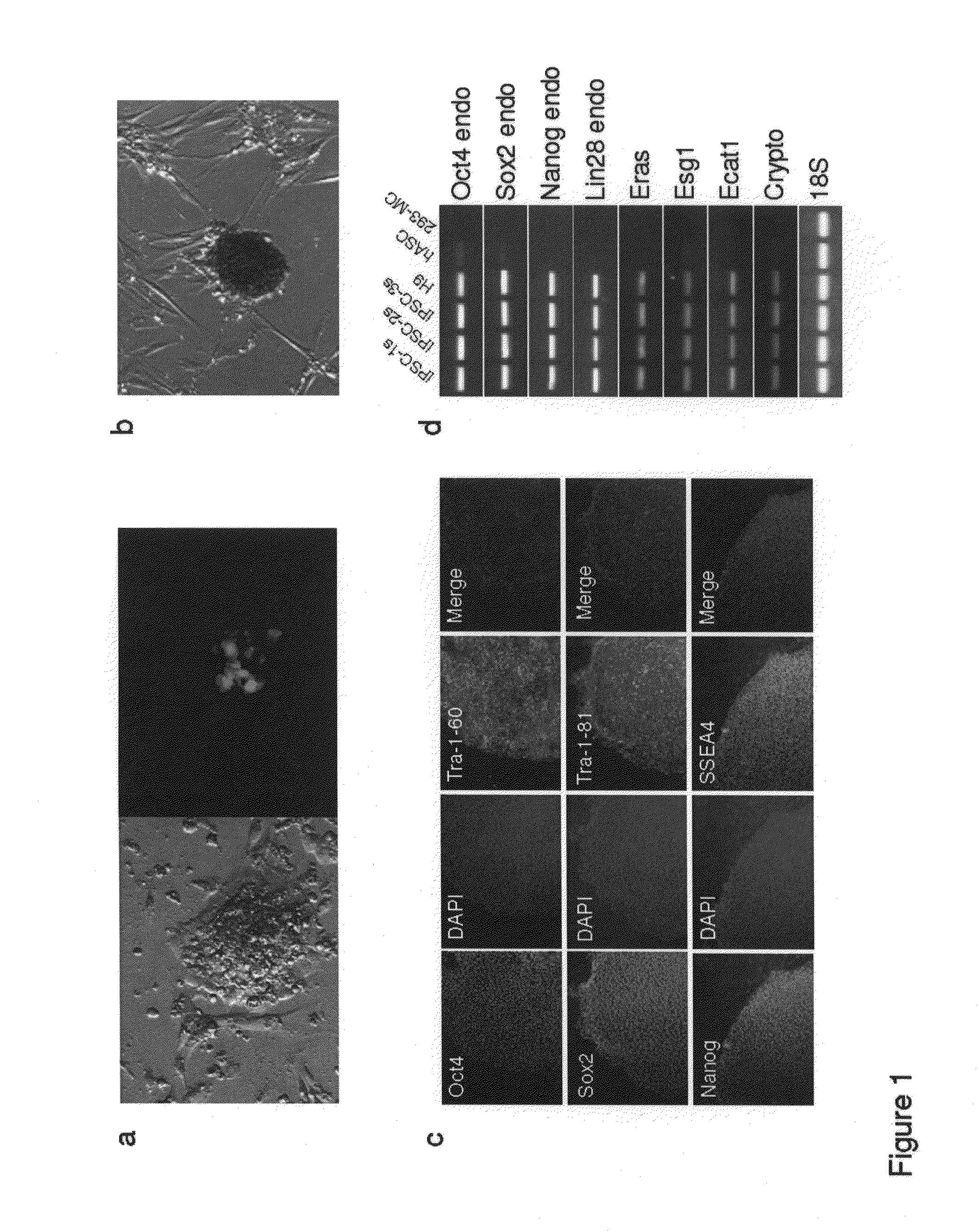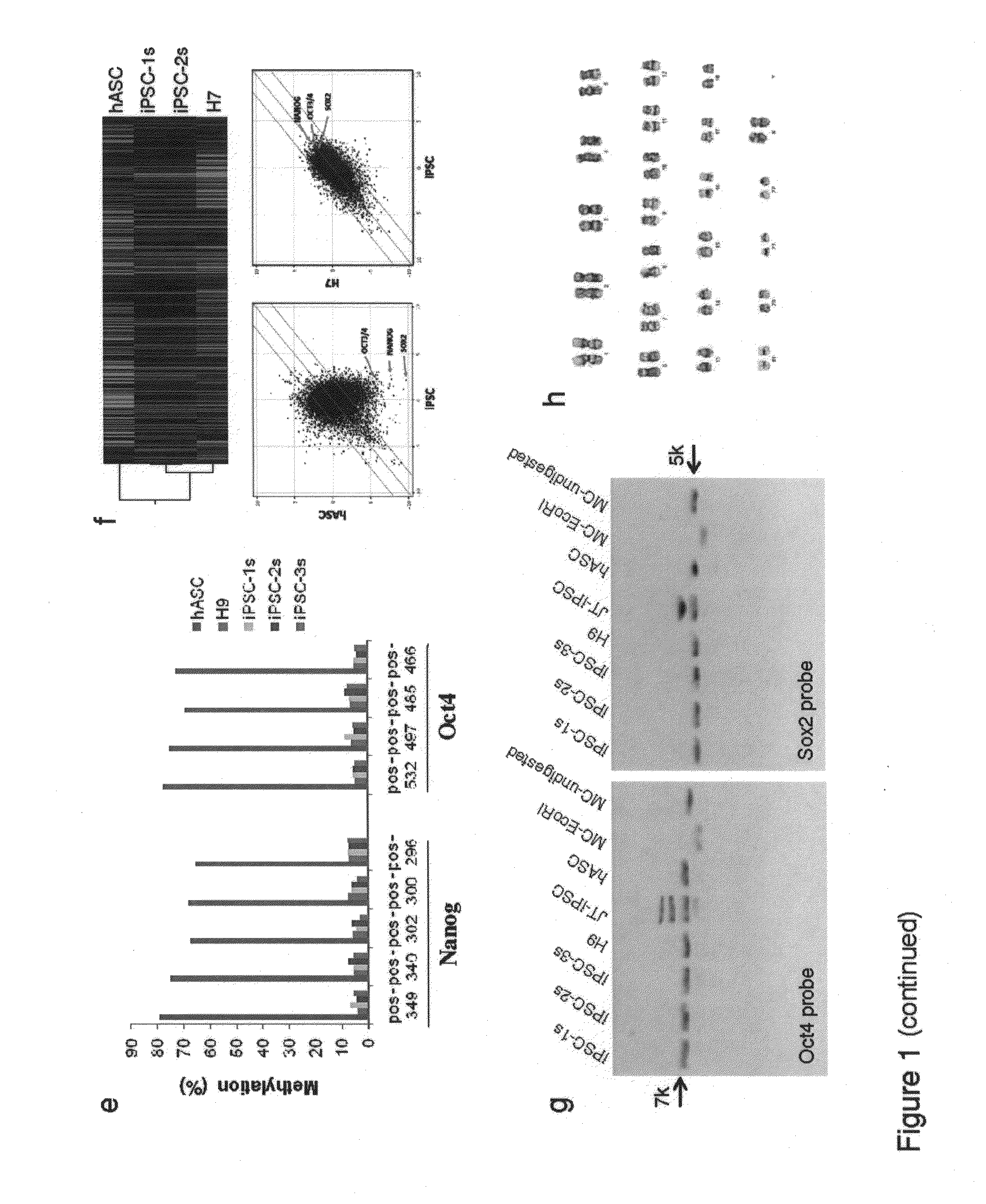Enhanced efficiency of induced pluripotent stem cell generation
a technology of induced pluripotent stem cells and enhanced efficiency, which is applied in the direction of genetically modified cells, skeletal/connective tissue cells, viruses/bacteriophages, etc., can solve the problems of low reprogramming efficiency and undesirable genome modification
- Summary
- Abstract
- Description
- Claims
- Application Information
AI Technical Summary
Benefits of technology
Problems solved by technology
Method used
Image
Examples
example 1
Minicircle DNA Induces Pluripotency in Adult Human Cells
[0115]Due to the risk of insertional mutagenesis, viral transduction has been increasingly replaced by non-viral methods to generate induced pluripotent stem (iPS) cells. One technique that has not yet been explored is the use of “minicircle” DNA, a novel compact vector that is free of bacterial DNA and capable of persistent high level expression in cells. Here, we report the use of a single minicircle vector to generate transgene-free iPS cells from adult human cells.
[0116]Non-viral methods for generating iPS cells using adenovirus, plasmids, or excision of reprogramming factors using Cre / LoxP or piggyBAC transposition have been reported, but in general are restricted to mouse, suffer from low reprogramming efficiencies (<0.003%), and may leave behind residual vector sequences. Recently, successful reprogramming of human cells was reported using episomal vectors derived from the Epstein-Barr virus. However, this technique requ...
example 2
Feeder-Free Derivation of Induced Pluripotent Stem Cells from Adult Human Adipose Stem Cells
[0137]Ectopic expression of transcription factors can reprogram somatic cells to a pluripotent state. However, most of the studies used skin fibroblasts as the starting population for reprogramming, which usually take weeks for expansion from a single biopsy. We show here that induced pluripotent stem (iPS) cells can be generated from adult human adipose stem cells (hASCs) freshly isolated from patients. Furthermore, iPS cells can be readily derived from adult hASCs in a feeder-free condition, thereby eliminating potential variability caused by using feeder cells. hASCs can be safely and readily isolated from adult humans in large quantities without extended time for expansion, are easy to maintain in culture, and therefore represent an ideal autologous source of cells for generating individual-specific iPS cells.
[0138]Induced pluripotent stem (iPS) cells have been successfully derived from s...
PUM
| Property | Measurement | Unit |
|---|---|---|
| color | aaaaa | aaaaa |
| heat map | aaaaa | aaaaa |
| bioluminescent images | aaaaa | aaaaa |
Abstract
Description
Claims
Application Information
 Login to View More
Login to View More - R&D
- Intellectual Property
- Life Sciences
- Materials
- Tech Scout
- Unparalleled Data Quality
- Higher Quality Content
- 60% Fewer Hallucinations
Browse by: Latest US Patents, China's latest patents, Technical Efficacy Thesaurus, Application Domain, Technology Topic, Popular Technical Reports.
© 2025 PatSnap. All rights reserved.Legal|Privacy policy|Modern Slavery Act Transparency Statement|Sitemap|About US| Contact US: help@patsnap.com



